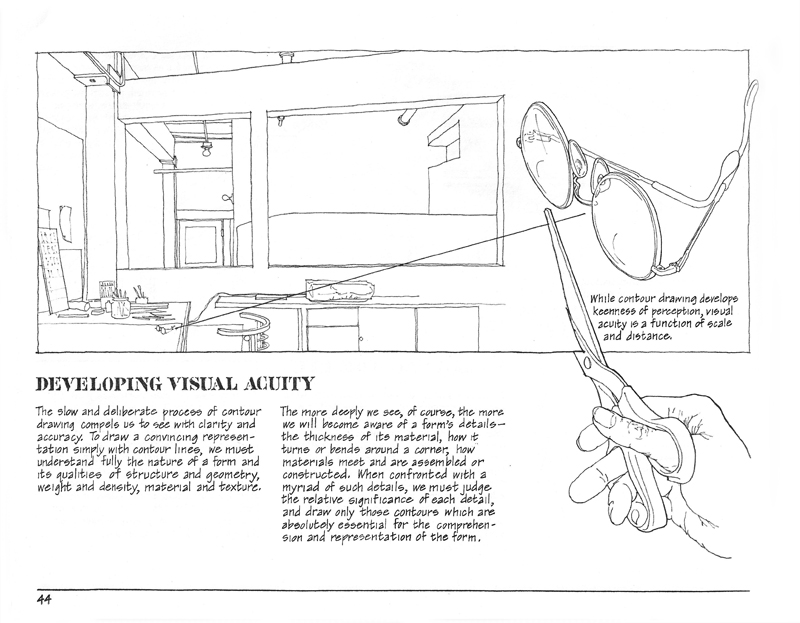Before I began using a computer in the early 1990’s to design and layout my books—before Aldus Pagemaker, QuarkXPress, and Adobe InDesign—I produced camera-ready pages by hand using white bond paper, a Scripto pencil with 1.1 mm leads, and a couple of drafting triangles. Later, I switched to Clearprint paper and 0.3 and 0.5 mm lead pencils but the hand-lettering and hand-drawing process remained essentially the same.
For me, the way a book is laid out and organized is an essential part of the message and so I often storyboarded my ideas before developing the final pages. Here is a sample storyboard for Drawing: A Creative Process. Even though the content and layout often changed as ideas were refined with lots of yellow trace overlays, storyboarding was an essential step in the book design process.
The beginning phase is always the most exciting time for a book project, involving floating a lot of ideas and experiencing false starts as well as a lot of trials and numerous errors, but once the basic structure of a book’s organization is established in outline form, the real and time-consuming work of production begins. And for that, I am happy to be able to use Adobe InDesign and the Tekton font.


